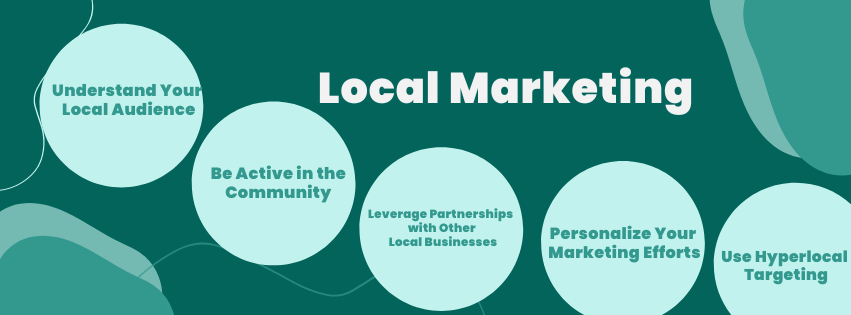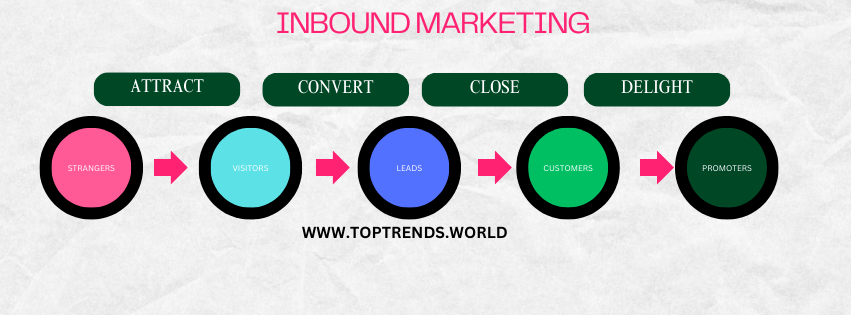Local marketing focuses on promoting a business’s products or services within a specific geographic area.
It is especially beneficial for small to medium-sized businesses that rely on local customers, such as restaurants, retail stores, service providers, or community-driven companies.
The primary goal of local marketing is to attract nearby customers by leveraging hyper-targeted strategies that emphasize convenience, local relevance, and personalized service.
Whether you run a brick-and-mortar business or offer location-based services, local marketing is an effective way to build brand awareness and drive foot traffic.
In this blog, we’ll explore what local marketing is, the key strategies involved, challenges businesses face, and tips for executing successful local marketing campaigns.

What is Local Marketing?
Local marketing, also known as neighborhood marketing or location-based marketing, focuses on promoting a business within a small, defined area, typically targeting customers who live or work nearby.
This type of marketing aims to attract people in the immediate vicinity by offering products or services that are convenient, relevant, and accessible.
Local marketing strategies are commonly used by:
- Small businesses (e.g., cafes, salons, local retail stores)
- Franchise locations (e.g., fast-food chains, gyms, service centers)
- Service providers (e.g., plumbers, real estate agents, contractors)
- Event-driven businesses (e.g., local theaters, community events)
The focus is on tapping into the local community and building strong relationships with customers who are likely to make repeat visits.
Marketing 360: The Complete Guide to Promotion and Growth
Key Strategies in Local Marketing
Google My Business (GMB) Optimization
- Google My Business is a free tool that allows businesses to manage their online presence across Google Search and Google Maps.
- Ensuring your GMB listing is optimized with accurate business details (e.g., address, hours, services) and collecting reviews can significantly improve your visibility in local searches.
- Example: A local bakery in New York City might ensure that their GMB listing shows their operating hours, location on Google Maps, and highlights photos of their most popular products.
Local SEO
- Local search engine optimization (SEO) focuses on optimizing your online content so that it ranks higher in search engine results for location-specific queries. Keywords related to your services and location, such as “best pizza in Chicago” or “plumber in downtown San Francisco,” can drive more local traffic to your website.
- Example: A dental clinic in Austin, Texas might optimize their website for terms like “Austin dental services” or “emergency dentist in Austin.”
Local Social Media Engagement
- Social media platforms like Facebook, Instagram, and Twitter can be powerful tools for engaging with your local community.
- Posting content that resonates with local culture, promoting events, offering exclusive deals, and using location-based hashtags can help drive awareness and foot traffic.
- Example: A local restaurant might use Instagram to promote a special event or offer discounts for customers who visit during a particular time frame.
Online Reviews and Reputation Management
- Positive reviews on platforms like Google, Yelp, TripAdvisor, or Facebook are critical to the success of local businesses.
- Encouraging satisfied customers to leave reviews and responding promptly to both positive and negative feedback can boost credibility and attract new customers.
- Example: A hair salon in Miami might ask happy customers to leave a review on Google and respond to each review personally, showing that they care about customer satisfaction.
Community Involvement and Sponsorship
- Local businesses that engage with the community through sponsorships, charity events, or local partnerships build strong connections with potential customers. Sponsoring a local sports team, participating in community events, or supporting local causes can enhance your brand’s reputation and visibility.
- Example: A local grocery store might sponsor a food drive or host a booth at a local farmer’s market to interact with community members and give back.
Location-Based Advertising
- Location-based advertising uses tools like Google Ads, Facebook Ads, and mobile geotargeting to serve ads to people in specific locations. By targeting users within a specific radius of your business, you can focus your ad spend on those who are most likely to visit your store or engage with your services.
- Example: A gym might run Facebook Ads that target people living within 10 miles of the facility, offering a free one-week membership trial.
Email Marketing
- Email marketing allows local businesses to maintain contact with their community and build relationships over time. Sending out newsletters with special offers, upcoming events, and local news can encourage repeat visits and keep your brand top-of-mind.
- Example: A local boutique might send an email announcing an exclusive sale for loyal customers or invite them to a private in-store shopping event.
Flyers, Direct Mail, and Local Newspapers
- While digital strategies dominate today’s marketing landscape, traditional methods like flyers, direct mail, and ads in local newspapers still hold value in local marketing.
- Distributing flyers in nearby neighborhoods or running print ads in community publications can increase brand awareness in the immediate area.
- Example: A local auto repair shop might send out mailers with discounts for oil changes or vehicle inspections to residents in their service area.
Challenges in Local Marketing
Reaching the Right Audience
- One of the main challenges in local marketing is ensuring that your campaigns reach the people who are most likely to visit your business.
- While digital advertising can help with precision targeting, businesses need to carefully define their audience and customize their approach.
Limited Budget
- Many local businesses operate with limited marketing budgets, which can restrict the range and frequency of campaigns.
- Prioritizing the most cost-effective marketing methods and maximizing organic reach through tools like Google My Business or social media is essential.
Maintaining an Online Reputation
- Managing online reviews can be challenging, especially for small businesses that may receive critical feedback.
- Negative reviews can deter potential customers, so it’s important to actively engage in reputation management by addressing complaints and highlighting positive feedback.
Competition with Larger Brands
- Local businesses often compete with national or global chains that have larger marketing budgets and established brand recognition. To stand out, local businesses must emphasize their unique value propositions, such as personalized service, community involvement, or specialty products.
Tips for Executing a Successful Local Marketing Campaign
Understand Your Local Audience
- Conduct research to understand the preferences, habits, and needs of your local customer base. This will allow you to create more targeted and relevant marketing campaigns. Are they driven by convenience, value, or customer service? Tailor your messaging accordingly.
Be Active in the Community
- Show that your business is a part of the community by participating in local events or hosting your own. Building relationships within the community can foster loyalty and generate word-of-mouth referrals.
Leverage Partnerships with Other Local Businesses
- Collaborating with other local businesses for cross-promotions or partnerships can benefit both parties by expanding reach and attracting new customers. For example, a coffee shop and a local bookstore might offer joint promotions for customers who visit both locations.
Personalize Your Marketing Efforts
- Personalized marketing is key to local engagement.
- Whether it’s through direct mail, social media, or email campaigns, addressing customers by name and offering relevant, location-specific deals can help your brand resonate more with the local community.
Use Hyperlocal Targeting
- Take advantage of hyperlocal targeting methods, such as geo-fencing, to deliver ads or notifications to people when they are physically near your business. This can be especially effective for driving foot traffic to retail locations, restaurants, or events.
Examples of Successful Local Marketing Campaigns
Domino’s “Paving for Pizza” Campaign
- Domino’s launched a unique local marketing campaign called “Paving for Pizza,” where the brand paid to repair potholes in various communities across the U.S. The campaign highlighted the company’s commitment to local neighborhoods and won praise for its community-focused approach.
Starbucks’ “Neighborhood Store” Concept
- Starbucks often opens location-specific stores designed to reflect the culture and aesthetic of the surrounding neighborhood. These “Neighborhood Stores” emphasize local art, design, and community-focused events, helping to foster strong connections with local customers.
Nike’s Hyperlocal Running Campaigns
- Nike frequently organizes local running clubs and events in major cities, promoting these through social media and targeted ads. By encouraging fitness and fostering community engagement, Nike builds loyalty and brand affinity in local markets.
Conclusion
Local marketing is all about connecting with your community and building lasting relationships with the customers who live and work nearby.
By leveraging strategies like Google My Business optimization, local SEO, community involvement, and personalized marketing, businesses can drive foot traffic, enhance their local reputation, and thrive in a competitive marketplace.
To succeed in local marketing, businesses must be proactive, authentic, and consistently engage with their local audience through relevant and targeted campaigns.





kydSTjcGmBsWO